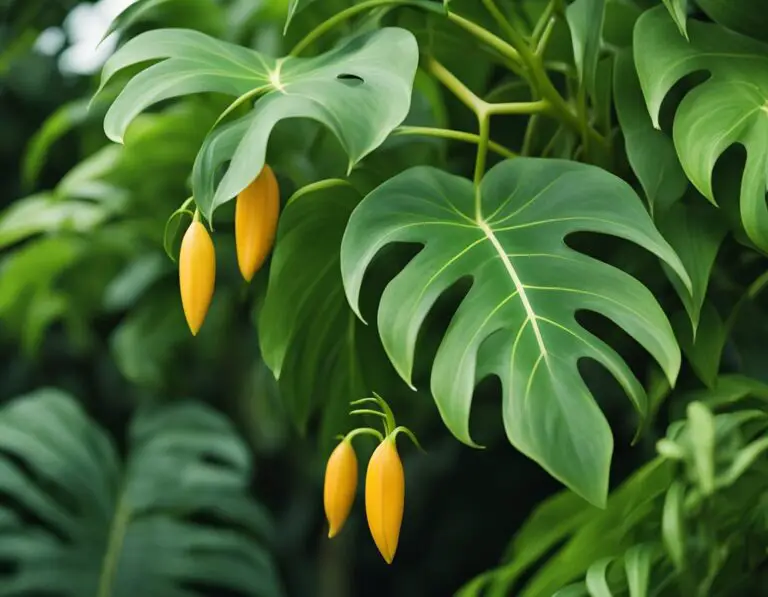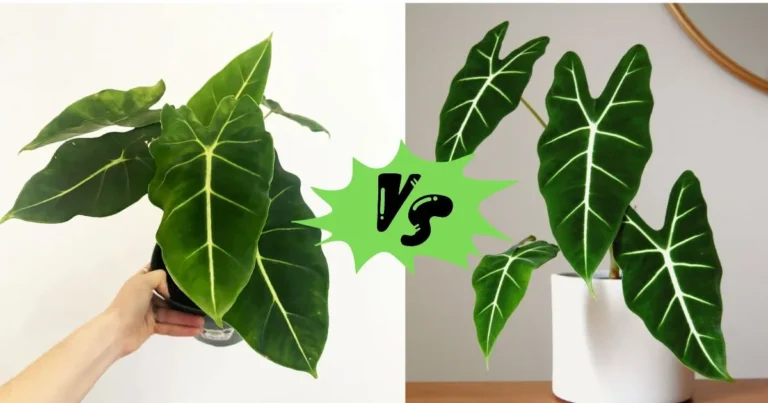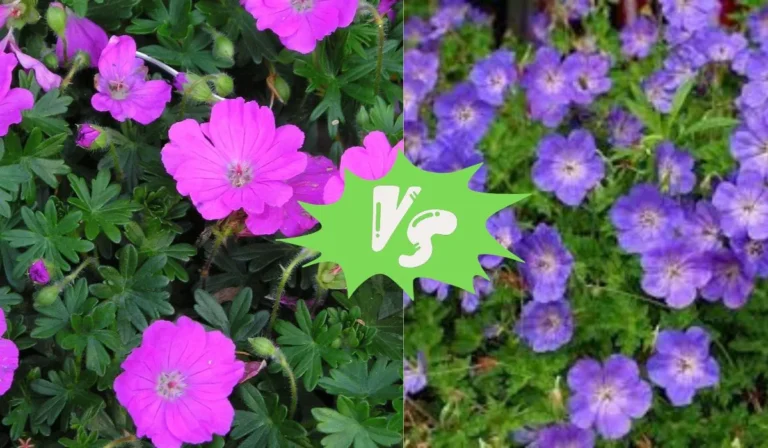Philodendron Heterocraspedon vs Patriciae: A Friendly Comparison
Are you looking to add a new philodendron to your plant collection, but can’t decide between philodendron heterocraspedon and philodendron patriciae? Both plants are beautiful and offer unique features, making it a tough decision. In this article, we’ll compare the two plants side by side, so you can make an informed decision on which one is the right fit for you.
Philodendron heterocraspedon and philodendron patriciae are both popular types of philodendrons, but they have some key differences. Understanding these differences is crucial before making a decision on which one to add to your collection.
In this article, we’ll explore the unique features of each plant, their growth rates, light requirements, and more, so you can make an informed decision on which one is the best fit for your home or office.
Key Takeaways
- Understanding the differences between philodendron heterocraspedon and philodendron patriciae is crucial before making a decision on which one to add to your collection.
- Philodendron heterocraspedon is a fast grower, while philodendron patriciae is a moderate grower.
- Both plants require bright indirect light, but they have different stem colors and leaf shapes.
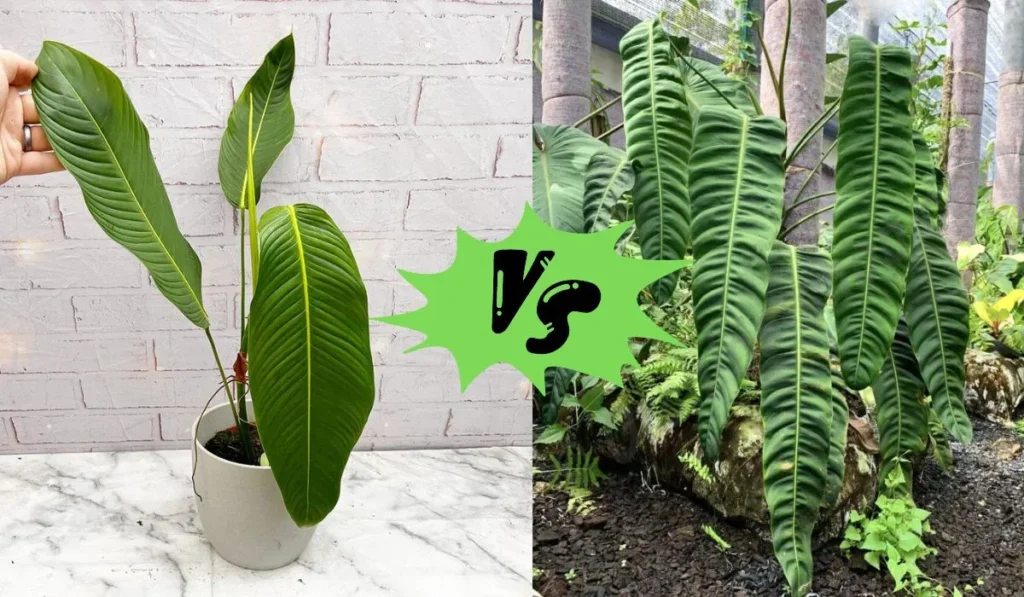
Philodendron Heterocraspedon vs Patriciae
If you are a plant enthusiast, you might have come across Philodendron Heterocraspedon and Patriciae. These two philodendron plants have some similarities but also some differences. Here are some key points to help you differentiate between the two.
Leaves
Philodendron Heterocraspedon has glossy green leaves that are smooth and elongated, while Philodendron Patriciae has wavy leaves with a somewhat matte surface. The leaves of Heterocraspedon have smooth edges while Patriciae leaves have wavy margins.
Heterocraspedon leaves can grow up to 48 cm long and 11 cm wide, while Patriciae leaves can grow up to 30 cm long and 20 cm wide.
Stems
The stems of Philodendron Heterocraspedon are hollow with a brownish tint, while those of Patriciae are green in color. Heterocraspedon is a fast grower and has a thicker stem, while Patriciae has a thinner stem and grows slower.
Growth Rate
When comparing the growth rate, Heterocraspedon is a fast grower and wins the game. It can grow up to 1.5 meters tall and 1 meter wide in ideal conditions. On the other hand, Patriciae is a slow grower and can take several years to reach its full potential.
Care
Philodendron Heterocraspedon is a relatively easy plant to care for. It prefers bright, indirect light and well-draining soil. It can tolerate some drought but doesn’t like to be completely dry for long periods. It also benefits from regular fertilization during the growing season.
Philodendron Patriciae, on the other hand, is a bit more challenging to care for. It prefers bright, filtered light and a well-draining soil mix that is kept consistently moist. It is sensitive to overwatering and can suffer from root rot if the soil is too wet.
I have had both Philodendron Heterocraspedon and Patriciae in my plant collection, and I must say that they are both stunning plants. Heterocraspedon is a fast grower and can quickly fill up a space, while Patriciae is slower but has a unique look that makes it worth the wait. Both plants are relatively easy to care for, but Patriciae requires a bit more attention to soil moisture.
Understanding Philodendron Heterocraspedon
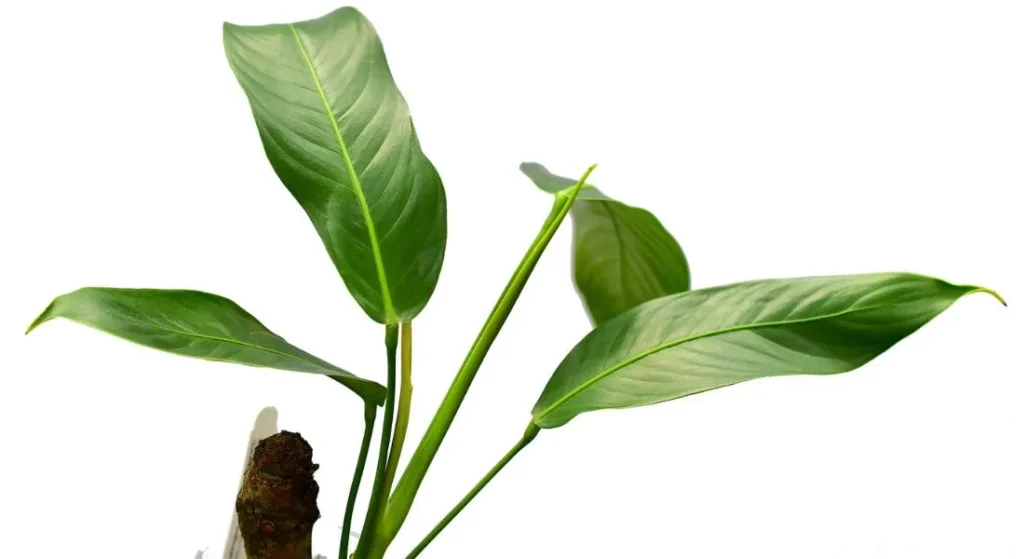
If you are looking for a rare yet beautiful plant to add to your collection, Philodendron Heterocraspedon is definitely worth considering. In this section, we will take a closer look at this plant and provide you with all the information you need to know to take care of it.
Origin and Habitat
Philodendron Heterocraspedon is native to Ecuador and can be found growing in the rainforest. It is a climbing plant that can grow up to 10 feet tall and 3 feet wide. It is a rare plant and can be difficult to find, but it is definitely worth the search.
Growth and Care
Philodendron Heterocraspedon is a low-maintenance plant that is easy to care for. Here are a few tips on how to take care of it:
- Light: This plant prefers bright, indirect light. Direct sunlight can burn the leaves.
- Water: Water the plant when the top inch of soil is dry. Do not overwater as this can cause root rot.
- Humidity: This plant prefers high humidity. You can increase humidity by misting the leaves or placing a humidifier nearby.
- Fertilizer: Fertilize the plant every 2-3 months during the growing season with a balanced fertilizer.
- Soil: This plant prefers well-draining soil that is rich in organic matter.
Common Issues
Here are a few common issues you may encounter with Philodendron Heterocraspedon:
- Yellowing leaves: This can be caused by overwatering or underwatering. Make sure to water the plant when the top inch of soil is dry.
- Brown tips: This can be caused by low humidity or too much fertilizer. Increase humidity or reduce fertilizer.
- Pests: Mealybugs and spider mites can be a problem. Use a neem oil solution to get rid of them.
Overall, Philodendron Heterocraspedon is a beautiful and low-maintenance plant that is definitely worth adding to your collection. With the right care, it can thrive and bring a touch of the rainforest to your home.
Exploring Philodendron Patriciae
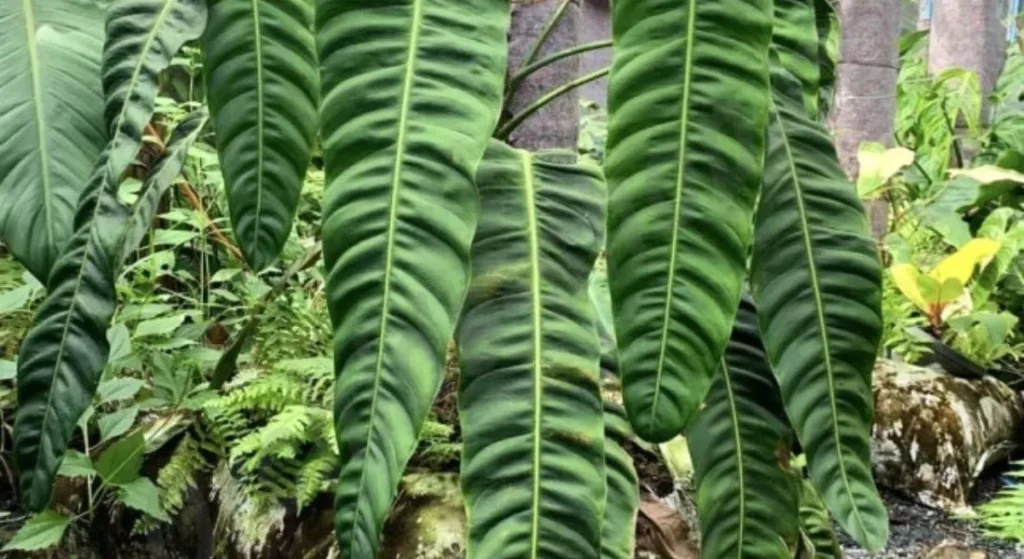
If you’re looking for a plant that can add some life and color to your home, the Philodendron Patriciae is definitely worth considering.
This beautiful plant has long, elongated, and wrinkled leaves that are sure to catch the eye of anyone who enters the room. Here’s what you need to know about this stunning plant.
Origin and Habitat
The Philodendron Patriciae is native to the tropical rainforests of South America, specifically Brazil. It’s a climbing plant that can grow up to several feet, making it perfect for those who want to add some greenery to their walls. The plant thrives in a humid environment and requires ample sunlight to grow.
Growth and Care
If you’re thinking of getting a Philodendron Patriciae, it’s important to know how to care for it properly. Here are some tips to help you keep your plant healthy and thriving:
- Potting: The Philodendron Patriciae grows best in a well-draining potting mix. You can mix soil, orchid bark, charcoal, and sphagnum moss in a ratio of 30:40:20:10 to create an ideal mixture for the plant’s growth.
- Watering: Overwatering can be a common issue with this plant. It’s important to let the soil dry out a bit before watering it again. Water the plant when the top inch of soil is dry to the touch.
- Fertilizing: You can fertilize your Philodendron Patriciae with a balanced liquid fertilizer during the growing season. Apply the fertilizer every two weeks to encourage healthy growth.
- Light: The plant requires bright, indirect light to grow properly. Keep the plant near a window that receives plenty of sunlight but avoid direct sunlight that can burn the leaves.
Common Issues
Like any plant, the Philodendron Patriciae can face some common issues. Here are some problems you might encounter and how to address them:
- Pests: Mealybugs, spider mites, and scale insects can infest the plant. Use a neem oil spray or insecticidal soap to get rid of them.
- Yellow Leaves: If you notice yellow leaves on your plant, it could be a sign of overwatering or underwatering. Adjust your watering schedule accordingly.
- Brown Tips: Brown tips on the leaves can be a sign of low humidity levels. Mist the plant regularly or place a humidifier nearby to increase humidity levels.
Key Differences Between Heterocraspedon and Patriciae
If you are a philodendron enthusiast, you may have heard of the two popular varieties, Philodendron Heterocraspedon and Philodendron Patriciae. While both plants belong to the same family and share some similarities, they have a few differences that set them apart.
In this section, we will take a closer look at the key differences between Heterocraspedon and Patriciae.
Leaf Shape and Texture
One of the most notable differences between the two plants is the shape and texture of their leaves. Philodendron Patriciae has elongated, pointed leaves, while Philodendron Heterocraspedon has rounder leaves.
Additionally, the texture of the leaves can also help differentiate between the two plants. Heterocraspedon has a velvety texture, while Patriciae has a glossy texture.
Growth Rate
Another significant difference between the two plants is their growth rate. Philodendron Heterocraspedon is a fast grower, while Philodendron Patriciae is a moderate grower. If you are looking for a plant that will quickly fill up a space, Heterocraspedon may be the better choice.
Light Requirements
Both plants require bright indirect light, but Heterocraspedon has a better tendency for low light than Patriciae. If you are looking for a plant that can thrive in under-lit places, Heterocraspedon may be a better choice.
Care and Maintenance
When it comes to care and maintenance, both plants require similar conditions. They need well-draining soil, regular watering, and occasional fertilization. However, Philodendron Patriciae is more sensitive to overwatering than Heterocraspedon, so it is essential to avoid letting it sit in wet soil.
In my experience, both plants are relatively easy to care for and can thrive in similar conditions. However, if you are looking for a plant that will quickly fill up a space, Philodendron Heterocraspedon may be the better choice due to its fast growth rate. On the other hand, if you are looking for a plant with elongated, pointed leaves and a glossy texture, Philodendron Patriciae may be the better choice.
Choosing the Right Philodendron for You
So, you’re in the market for a new philodendron, but you’re not sure which one to choose. Well, fear not! In this section, we’ll take a closer look at the differences between Philodendron Heterocraspedon and Patriciae, so you can make an informed decision.
First off, let’s talk about appearance. Heterocraspedon has glossy leaves with smooth edges, while Patriciae leaves have a somewhat matte surface with wavy margins. The former plant’s stems are hollow with a brownish tint, while those of Patriciae are green in color.
When it comes to growth rate, Heterocraspedon is the clear winner. It’s a fast grower, so if you’re looking for a plant that will quickly fill a space, this is the one for you. Patriciae, on the other hand, grows more slowly, so it’s a better choice if you want a plant that won’t outgrow its space too quickly.
Another thing to consider is toxicity. Both plants are poisonous, so if you have children or pets, you’ll want to keep them out of reach. However, Heterocraspedon is more toxic than Patriciae, so if you’re particularly concerned about safety, you may want to go with the latter.
Finally, let’s talk about availability. Heterocraspedon is quite rare, so it may be harder to find than Patriciae. However, if you’re willing to do a bit of searching, you may be able to track one down.
In the end, the choice between Philodendron Heterocraspedon and Patriciae comes down to your personal preferences. If you want a plant that grows quickly and has glossy leaves, go with Heterocraspedon. If you prefer a slower-growing plant with matte leaves, choose Patriciae. Either way, you’re sure to end up with a beautiful addition to your home or office.
Frequently Asked Questions (FAQs)
What are the distinguishing characteristics of Philodendron heterocraspedon and Patriciae?
Philodendron heterocraspedon and Patriciae are both beautiful plants that have a lot to offer. Heterocraspedon has glossy leaves with smooth edges while Patriciae leaves have a somewhat matte surface with wavy margins. The stems of the former plant are hollow with a brownish tint while those of Patriciae are green in color. When comparing the growth rate, Heterocraspedon, being a fast grower wins the game.
How can I tell the difference between Philodendron heterocraspedon and Patriciae?
The easiest way to tell the difference between Philodendron heterocraspedon and Patriciae is by looking at their leaves. Heterocraspedon has glossy leaves with smooth edges while Patriciae leaves have a somewhat matte surface with wavy margins. The stems of the former plant are hollow with a brownish tint while those of Patriciae are green in color.
What are the similarities and differences between Philodendron heterocraspedon and Patriciae?
Philodendron heterocraspedon and Patriciae are both beautiful plants that have a lot to offer. They are both part of the Philodendron family and have similar care requirements. However, they differ in a few ways. Heterocraspedon has glossy leaves with smooth edges while Patriciae leaves have a somewhat matte surface with wavy margins. The stems of the former plant are hollow with a brownish tint while those of Patriciae are green in color. When comparing the growth rate, Heterocraspedon, being a fast grower wins the game.
What are the growing requirements for Philodendron heterocraspedon and Patriciae?
Philodendron heterocraspedon and Patriciae both require similar growing conditions. They prefer bright, indirect light and well-draining soil. They also like high humidity levels, so it’s important to mist them regularly or place them in a humid room. Water them when the top inch of soil is dry and fertilize them monthly during the growing season.
Can Philodendron heterocraspedon and Patriciae be propagated in the same way?
Yes, Philodendron heterocraspedon and Patriciae can be propagated in the same way. The easiest way to propagate them is through stem cuttings. Take a cutting with at least one node and place it in water or well-draining soil. Keep it in a warm, humid location and wait for roots to form before transplanting it into a pot.
Are there any hybrid varieties of Philodendron that include heterocraspedon and Patriciae?
Yes, there are hybrid varieties of Philodendron that include heterocraspedon and Patriciae. One popular hybrid is the Philodendron ‘Moonlight’, which has the glossy leaves of heterocraspedon and the wavy margins of Patriciae. It’s a beautiful plant that’s easy to care for and adds a unique touch to any plant collection.
Conclusion
In conclusion, both Philodendron Heterocraspedon and Philodendron Patriciae are great plants to add to your collection. They both have unique characteristics that make them stand out.
If you’re looking for a plant that grows fast, then Heterocraspedon is the way to go. It has a glossy appearance and smooth edges that make it visually appealing. The leaves of Heterocraspedon are also larger than Patriciae, making it ideal for a statement piece in your home.
On the other hand, Patriciae has a matte surface with wavy margins that give it a more rugged look. It’s a slow grower, but it’s worth the wait. Its green stems are also a nice contrast to its leaves.
When it comes to care, both plants are relatively easy to maintain. They require well-draining soil, moderate watering, and bright, indirect sunlight. However, it’s important to note that Heterocraspedon is more tolerant of low light conditions than Patriciae.
In terms of air purification, Heterocraspedon is a better choice. It’s known for its ability to remove harmful toxins from the air, making it a great addition to any home.
Overall, the decision between Heterocraspedon and Patriciae ultimately comes down to personal preference. Both plants have their own unique qualities that make them a great addition to any plant collection.


